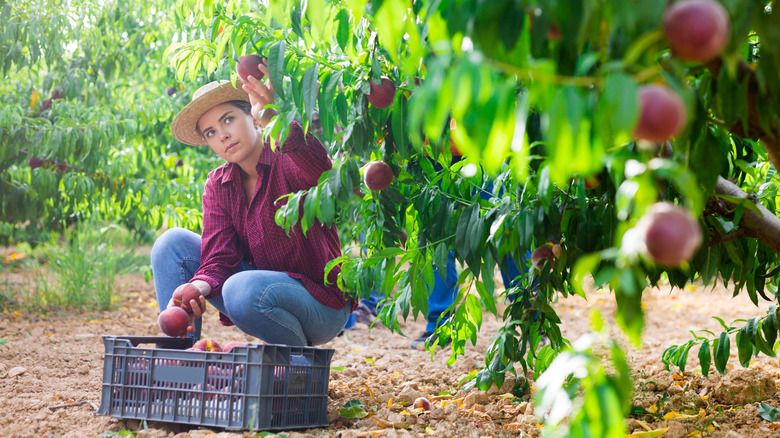The Flowering Ground Cover That Will Help Your Fruit Trees Thrive In The Garden
Whether you're growing apples, peaches, or an uncommon fruit such as pawpaws in your garden, the health of your trees is paramount. If your trees are struggling to find the water or nutrients they need, they're likely to feel stressed, which makes them more susceptible to diseases. Problems like these can keep them from producing an abundance of high-quality fruit. Planting borage (Borago officinalis) can keep these stressors at bay. In addition to supporting your tree's well-being, this companion plant will benefit your entire garden by attracting bees, hummingbirds, and other pollinators. When these guests visit your borage's bold blue flowers, they're likely to pollinate the blossoms of nearby fruit trees, squash vines, and more. Plus, borage gives lacewings and other beneficial insects places to live. The more these helpers hang around, the more they can evict troublemaking insects from your garden.
Borage provides other perks as well. It deters a host of creatures that might bother your fruit and vegetable plants, including rabbits, deer, slugs, cabbage worms, and tomato hornworms. Plus, it might deliver nutrients from deep in the ground to the uppermost layers of soil, where your tree's roots can access them more easily. These vitamins and minerals can fortify your tree and make it less vulnerable to fruit-setting problems, blossom-end rot, and other issues caused by nutrient deficiencies. Borage is thought to draw lots of potassium into its foliage, which then accumulates in the soil after the leaves drop and decompose. This nutrient plays an important role in fruit formation and quality. Borage even functions like mulch, controlling weeds as it helps the soil around your fruit tree retain moisture.
What makes borage so easy to grow
An adaptable plant that needs little maintenance, borage is an ideal choice for time-strapped gardeners. It can handle inconsistent watering and will often reseed itself, erasing the need to plant more the following spring. Borage also isn't scared of less-than-ideal soil. Acidic and alkaline soils are usually fine, and so are planting sites rich in clay or sand. Some plants won't thrive in the shade your tree's canopy casts on the ground. Not borage. It will tolerate shade as long as it gets 2 to 6 hours of sunlight over the course of a day. Plus, you can grow borage almost anywhere in the United States since it thrives in USDA hardiness zones 2a through 11b.
Borage is related to comfrey, another ground cover that naturally benefits fruit trees, but it is significantly shorter, rarely growing taller than 2 feet. Comfrey will sometimes creep onto a tree's base, where it's extremely difficult to pull out, but borage doesn't have this habit. As an added bonus, you can sip borage tea as you wait for your tree's fruit to ripen. Steep 1 to 3 tablespoons of just-picked leaves in a cup of water and enjoy its relaxing effects.

